Cocktails first became a part of the popular culture in the early decades of the 20th century. They fell out of favor mid-century but have regained their popularity in the early decades of the 21st century. Modern mixologists have started using fresh herbs in their recipes. You can plant your own “cocktail” herb garden to ensure a ready supply of ingredients for your cocktail creations. The herbs most often used in recipes are also among the most commonly grown herbs.
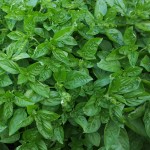
Sweet Basil
Basil (Ocimum basilicum) is probably the most popular cocktail herb. It’s used in many different drink recipes both muddled and as a garnish. Basil is an annual herb that is very easy to grow as long as you provide it with lots of sun and lots of water. It does not tolerate dryness. Pinch the flower buds to both encourage branching and to keep the leaves tasting sweet. Once the plant blooms, the leaves become bitter.

Thai Basil
Thai Basil’s (Ocimum basilicum) licorice flavor is popular in Asian inspired drinks. It looks slightly different from sweet basil with its purple stems and flowers, but it is grown the same. Lots of sun and lots of water and pinch those flowers!

Cilantro
Cilantro (Coriandrum sativum) is a must in Southwestern inspired cocktails although you might want to check with your guests first to make sure that they aren’t among the 15% of the population to whom cilantro tastes like soap. Cilantro, an annual, is a cool season plant like lettuce. It will bolt, or flower, when the soil temperature rises above 75°F. You can delay flowering a few weeks by heavily mulching the plants to keep the soil cool.

Ginger
Ginger (Zingiber officinale) is another must-have ingredient for Asian inspired drinks. Ginger is a tropical plant, most often grown in containers in temperate climates. Keep your containers in a semi-shady area that is sheltered from the wind. Ginger does not like direct sun or too much wind. Roots are harvested for use at maturity, generally 8 to 10 months.

Lavender
Lavender (Lavandula angustifolia) For your cocktails, you want to use English lavender which has the most taste. Both the leaves and the flowers can be used depending on the recipe. Lavender is easy to grow and seemingly indestructible. English lavender is hardy in zones 5-8. Buy a plant and put it in the sunniest, hottest, driest spot in your garden and then forget about it. Too much water and too little sun are sure fire ways to kill it.
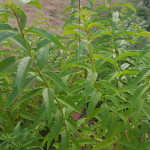
Lemon Verbena
Lemon Verbena (Aloysia citrodora) adds a lemony zing to your drinks. It is only hardy through zone 8. North of zone 8, it is grown as an annual or in a container that is brought in during the winter. It is a woody shrub that grows 12 to 15 feet high in tropical areas, 5 to 6 feet high in the north.
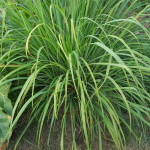
Lemongrass
Lemongrass (Cymbopogon citratus) adds a citrus zing to Asian inspired cocktails. It’s a native of India and southeast Asia so north of zone 9, it will need to be brought inside during the winter months or grown as an annual. Mature plants reach a height of 5 feet.
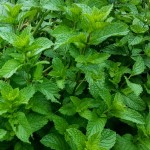 Mint (Mentha spp) is probably the oldest and most widely used herb ingredient in cocktails. It’s most popular use is in mint juleps and mojitos. For a strong mint flavor, use peppermint (Mentha × piperita). If you prefer a milder flavor, go with spearmint (Mentha spicata). Mint is a notoriously invasive perennial through zone 4. It should be confined to a container or grown in its own garden bed so that it won’t crowd out other plants. Mint can be grown in either sun or light shade. Keep your mint well-watered. It doesn’t like being dry.
Mint (Mentha spp) is probably the oldest and most widely used herb ingredient in cocktails. It’s most popular use is in mint juleps and mojitos. For a strong mint flavor, use peppermint (Mentha × piperita). If you prefer a milder flavor, go with spearmint (Mentha spicata). Mint is a notoriously invasive perennial through zone 4. It should be confined to a container or grown in its own garden bed so that it won’t crowd out other plants. Mint can be grown in either sun or light shade. Keep your mint well-watered. It doesn’t like being dry.
 Oregano (Origanum vulgare) is one of the newer ingredients being used by mixologists. Italian oregano has a very mild flavor. If you want a stronger oregano flavor, try Greek oregano (Origanum vulgare spp hirtum). Both are drought tolerant, require full sun and are hardy through zone 5. Like basil, the leaves will become bitter tasting after the plants blooms so prune away any buds before they open into flowers.
Oregano (Origanum vulgare) is one of the newer ingredients being used by mixologists. Italian oregano has a very mild flavor. If you want a stronger oregano flavor, try Greek oregano (Origanum vulgare spp hirtum). Both are drought tolerant, require full sun and are hardy through zone 5. Like basil, the leaves will become bitter tasting after the plants blooms so prune away any buds before they open into flowers.
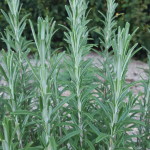
Rosemary
Rosemary (Rosmarinus officinalis) is another new ingredient. It lends a piney flavor to drinks. The leaves are most often used in syrups, infusions or as garnish. Rosemary is only reliably hardy through zone 7. It can survive mild winters with protection in zone 6. In northern areas, rosemary should be grown in pots and brought inside once the outdoor temperatures are less than 30°F. Give it full sun but not a lot of water. Like lavender and oregano, it prefers to be dry.
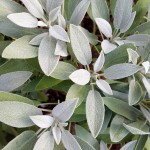
Sage
Sage (Salvia officinalis) is new to cocktails. Its leaves lend an earthy flavor. Sage is used in syrups or muddled. Hardy through zone 5, sage is a shrubby perennial. The plants become woody within three to four years and will need to be replaced. Plant your sage in a sunny, well-drained location. It prefers to be dry.
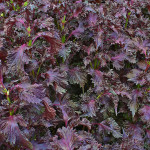
Shiso
Shiso (Perilla frutescens) tastes like a cross between basil and mint. It is sometimes known as Japanese basil. Use it in your Asian inspired cocktails. Shiso is a tropical plant that is grown as an annual. It likes full sun but can tolerate some shade. Keep it well watered. It doesn’t like to be dry.
 Thyme (Thymus vulgaris) is another new herb to the science of mixology. It is used in infusions and as a garnish. Thyme is perennial in zones 5 through 9. It prefers a sunny location, but will tolerate some shade. It must be dry, however. Too much moisture will rot the roots.
Thyme (Thymus vulgaris) is another new herb to the science of mixology. It is used in infusions and as a garnish. Thyme is perennial in zones 5 through 9. It prefers a sunny location, but will tolerate some shade. It must be dry, however. Too much moisture will rot the roots.
So are you ready to start mixing cocktails? Here are some recipes from Saveur featuring herbs, including some unusual drinks that use dill, tarragon, orris root, fennel and caraway. Salud!

